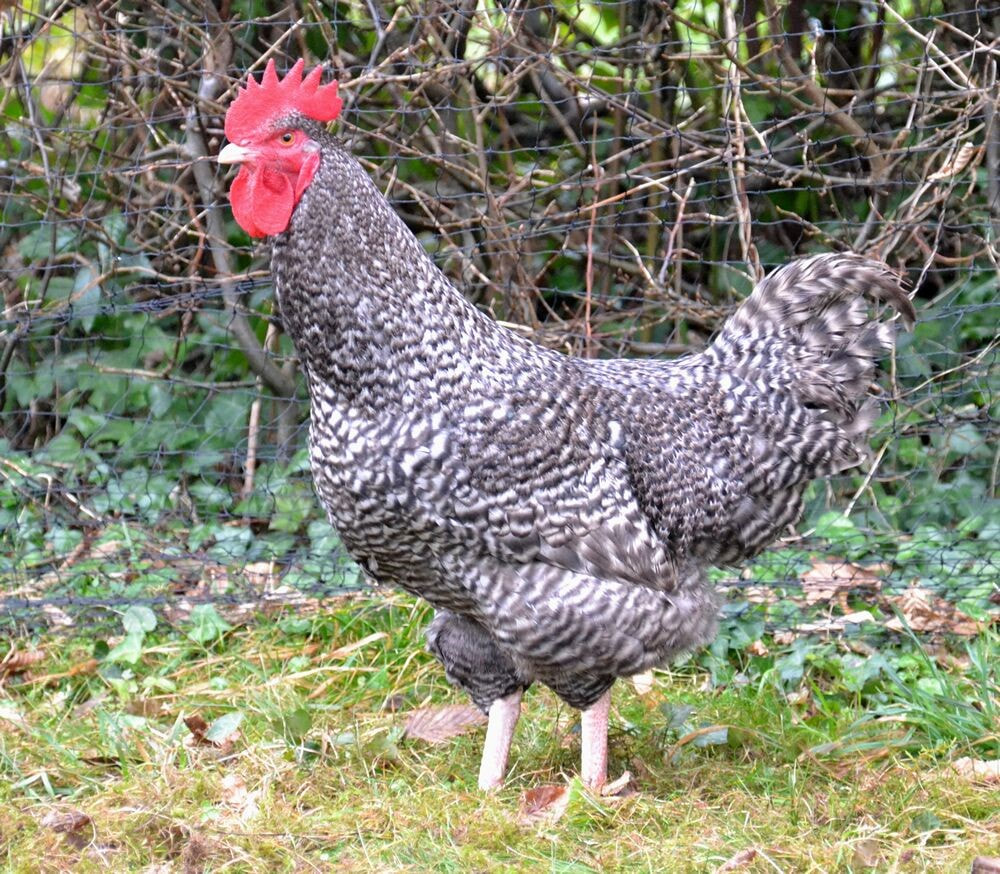One of the earliest records of the Coucou de Rennes is from the 1858 work, “Le Poulailler”, by C. Jacques. A bird well known for its fine flesh, the Coucou de Rennes (CdR) was prevalent in agricultural markets during the 19th and 20th centuries. Dr Ramé, a medical professional, spent his free time selecting and breeding the CdR to the highest standard. The CdR were thought to be extinct until circa 1987, when the Ecomusée de Rennes secured ten pairs, setting to work on breeding the birds to time-honoured standards. The Coucou de Rennes was considered a rare breed in France, but is starting to gather some followers, notably due to the formation of a society for its conservation. First appearing in the United Kingdom in 2011, their popularity is growing with a few dedicated breeders.
General Characteristics: male
Type: Body long, wide and well built, with back slightly inclined. Shoulders wide, covered by hackle. Wings carried horizontally and close to body. Tail well furnished, leaders carried slightly higher than main tail. Chest large and prominent. Well-developed abdomen.
Head: Rather fine with a smooth red face. A single comb of medium size not deviating from line of head. Wattles of medium length. Beak strong in form.
Neck: Neck relatively long with abundant hackle feathering.
Legs and feet: Thighs heavy set with close fitting plumage. Legs quite long and smooth. Four toes well spread.
Plumage: Close fitting, not profuse.
Female
Same as male, taking into account the natural sexual differences. Stands slightly more horizontally with tail held mildly fanned. Comb: straight or very slightly drooping.
General Characteristics: male
Type: Body long, wide and well built, with back slightly inclined. Shoulders wide, covered by hackle. Wings carried horizontally and close to body. Tail well furnished, leaders carried slightly higher than main tail. Chest large and prominent. Well-developed abdomen.
Head: Rather fine with a smooth red face. A single comb of medium size not deviating from line of head. Wattles of medium length. Beak strong in form.
Neck: Neck relatively long with abundant hackle feathering.
Legs and feet: Thighs heavy set with close fitting plumage. Legs quite long and smooth. Four toes well spread.
Plumage: Close fitting, not profuse.
Female
Same as male, taking into account the natural sexual differences. Stands slightly more horizontally with tail held mildly fanned. Comb: straight or very slightly drooping.
Please contact the breed registrar for more information


